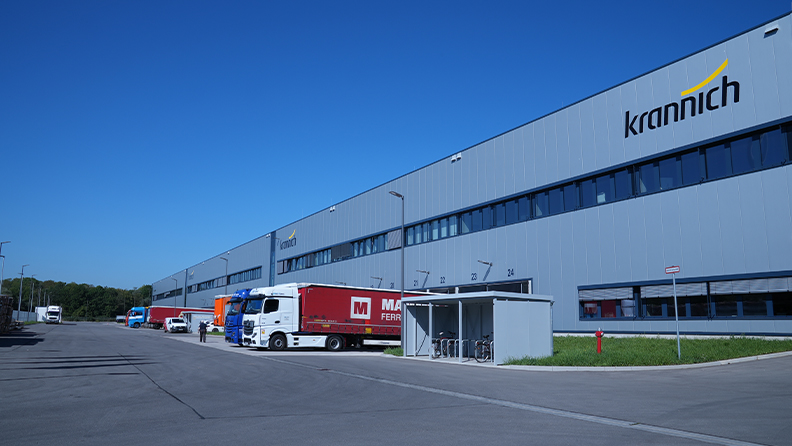From Foundation to Flight: The Global Journey to Carbon Neutrality
In every era, humanity establishes a shared mission. Today, that mission is achieving carbon neutrality.
From the Paris Agreement to the 29th United Nations Climate Change Conference held in Azerbaijan, tremendous efforts are underway in various industries and sectors around the globe to protect our planet.
In 2020, China announced its ambition to reach peak carbon emissions by 2030 and become carbon neutral by 2060. Four years later, China has reached a new level in its carbon reduction efforts. In 2024, the National Development and Reform Commission, the State Administration for Market Regulation, and the Ministry of Ecology and Environment issued the Action Plan for Further Strengthening the Construction of the Standard Measurement System for Achieving Carbon Dioxide Peaking and Carbon Neutrality (2024–2025), demonstrating China's determination to become carbon neutral.

How can we drive sustainable development? How should each individual and organization within our society and economy collaborate with each other to maximize green efficiency?
This article delves into three of the latest technology trends and development dynamics for carbon neutrality: technology, enterprise, and society.
More importantly, it calls for deep collaboration that strives to achieve carbon neutrality and build a greener planet.
Technological Advancement
Technology plays a pivotal role in going carbon neutral while ensuring stable economic development and improving people's lives. Breakthroughs in energy technology, coupled with cutting-edge innovations such as intelligence and digitalization, will fuel our efforts to achieve carbon neutrality.
Technological advancements are essential for promoting sustainable development. In particular, three technological areas will play a crucial role: fossil fuel, renewable energy, and carbon capture and storage technologies.
First, fossil fuel technologies will enable clean and efficient energy utilization.
Fossil fuels are a major source of carbon emissions. To combat these, it is necessary to transform fossil fuel technologies. Take China as an example. Technological innovations, such as energy-saving use of coal power and heating system upgrades, have significantly reduced the coal consumption in the energy mix.
Second, renewable energy technologies will extend the use of green energy.
Replacing conventional fossil fuels with renewable energy sources, such as wind, solar, and hydropower, is the key to achieving carbon neutrality. Renewable energy technologies will shift from collecting and converting energy to its large-scale use. In particular, building a new power system centered on renewable energy and developing clean energy as the main energy source are today's top priorities.
New power systems centered on renewable energy are facing numerous challenges, particularly when it comes to power grid integration. Technical transformation and upgrades throughout power generation, transmission, distribution, and consumption will make renewable energy more grid-friendly and support integration.
Grid-forming energy storage technology is key to facilitating this process. Grid forming is an essential technology for new power systems and is at the forefront of power system innovations in various countries. Huawei Digital Power has established expertise in connecting renewable energy to the grid and other grid-friendly technologies. The tech giant is powering the shift from following the grid to supporting and forming it instead, helping build a new power system for renewable energy. The priority of developing renewable energy technologies is shifting from individual energy collection and storage to large-scale grid integration and popularization of renewable energy. In this process, digital and power electronics technologies will play an increasingly important role in managing watts with bits.
Third, carbon capture and storage technologies will help control carbon emissions.
In addition to optimizing the energy mix and developing alternative energy sources, we can also play an active role in controlling carbon emissions. For example, carbon dioxide can be separated from industrial processes, energy utilization, and even directly from the atmosphere. It can be used or injected into a deep underground geological reservoir for storage. Carbon capture and storage technologies can permanently reduce carbon dioxide emissions. These technologies are developing rapidly, establishing the last line of defense for the Earth against carbon emissions.
A myriad of technologies can facilitate the clean and efficient use of fossil fuels, build new power grids with renewable energy, and promote carbon capture, thus creating an enriched system that brings us closer to carbon neutrality.
Ultimately, ongoing technological progress will be pivotal to achieving global carbon neutrality.
Corporate Responsibility
Undoubtedly, enterprises are at the center of carbon emissions. It is the responsibility of each and every enterprise to cut emissions and go carbon-neutral. Carbon neutrality should be an integral part of corporate development goals, just like economic development, job creation, and social welfare.
There are at least two critical ways in which enterprises can undertake their carbon neutrality responsibilities.
Firstly, companies can include carbon neutrality goals and commitments as part of their strategies.
As various countries and regions are actively proposing carbon neutrality goals, enterprises can also set goals that align with their vision and mission. Then, they can determine their strategic plans and implement actions around these goals.
Huawei Digital Power is an active player in green corporate social responsibility. By setting its own carbon neutrality goals, Huawei Digital Power has built a low-carbon governance system for its entire value chain, promoting comprehensive zero-carbon actions covering the products, supply chain, and business operations.
At the product level, Huawei Digital Power blends low-carbon and environmentally friendly concepts into its product design and implements them throughout the product lifecycle. In 2022, Huawei was awarded the world's first Carbon Footprint Verification (CFV) for inverter products issued by the British Standards Institution (BSI), contributing to carbon neutrality in the PV industry.
At the supply chain level, Huawei Digital Power incorporates low-carbon concepts into its supply chain management strategy, valuing the environmental protection performance of its suppliers. As of August 2024, Huawei Digital Power has encouraged its top 92 suppliers, which account for 90% of all procurement, to carry out an organizational-level carbon inventory, collect statistics on carbon emissions, develop emission reduction plans, and implement emission reduction projects. This drives the company's entire supply chain to achieve low-carbon targets.
At the business operations level, Huawei Digital Power adopts measures such as energy-saving technologies, energy management, and the use of clean energy during manufacturing and daily operations to reduce carbon emissions. Huawei Digital Power has built a near-zero-carbon campus for its Antuoshan building. It uses innovative technologies — such as building integrated photovoltaics (BIPV), refined energy storage system, fully liquid-cooled ultra-fast charging infrastructure, and an AI-based collaborative scheduling algorithm — to manage energy more efficiently and optimize energy usage. It is estimated that the campus can produce 1.5 million kWh of green electricity each year by making full use of the building exterior for PV installations, equivalent to reducing carbon dioxide emissions by about 871.5 tons.
According to the science-based carbon targets validated by the Science Based Targets initiative (SBTi), Huawei Digital Power will achieve net-zero emissions of greenhouse gases across the entire value chain by 2040. Proposing carbon neutrality goals and making them a reality has become imperative for Huawei Digital Power and other global enterprises.
Secondly, enterprises should actively calculate their carbon footprint and reduce it accordingly.
A carbon footprint indicates the amount of carbon dioxide emissions directly or indirectly caused within a specific period of time. It covers carbon emissions throughout the business lifecycle, from production to transportation and operations. Actively calculating the carbon footprint allows us to quantify carbon emissions, helping enterprises determine appropriate reduction measures.
In addition to enterprises, academic institutions, organizations, and governments also have the responsibility to calculate their carbon footprint and transparently share their impact. All enterprises, organizations, and individuals should join forces to achieve carbon neutrality goals.
Social Collaboration
To achieve carbon neutrality, we, as a society, must work together, drawing on technological advancements and corporate efforts. Effective collaboration systems, market mechanisms, and public awareness campaigns are necessary to facilitate collaboration and drive sustainable development for carbon neutrality. Here are some ways we can work together toward this common goal.
First, we must establish a carbon emission trading mechanism.
Such a market mechanism will encourage enterprises to achieve their carbon emission targets. Countries and regions around the world have been establishing carbon emission trading mechanisms and carbon trading markets. China has seen positive results from this strategy. As of September 30, 2024, a total of 481 million tons of carbon credits have been traded under the carbon emissions allowance (CEA) in the Chinese market, amounting to CNY28.421 billion. The carbon emission trading mechanisms will keep improving to drive carbon neutrality.
Second, we need to promote climate finance.
Climate finance is a key topic in the United Nations Framework Convention on Climate Change (UNFCCC) and the Paris Agreement. It has become a key factor in global economic development and carbon neutrality campaigns. Carbon neutrality responsibilities and capabilities should be major considerations in financial systems. Financial support should be provided to develop key technologies and efforts for carbon neutrality, and financial approaches should help enterprises achieve their emission reduction targets. In this way, social resources will be effectively leveraged to achieve carbon neutrality.
Third, it is critical to drive public awareness and education.
Carbon neutrality is vital to humanity. The whole society should act together. We should raise public awareness of climate change issues, strengthen the recognition of carbon neutrality, and ensure global participation in this campaign to drive sustainable development.
We are now on the long and arduous road toward sustainable development. A synergy of technological advancements, corporate efforts, and social collaboration is the only way to achieve global carbon neutrality objectives.
Becoming carbon neutral will establish a defense for our planet and lead us to a better, greener future.



 Search
Search
 EN
EN









